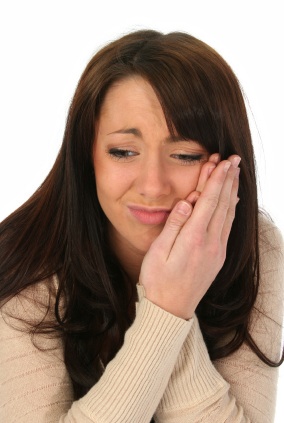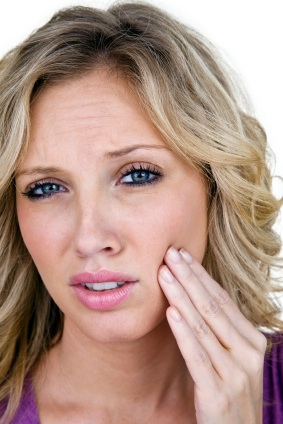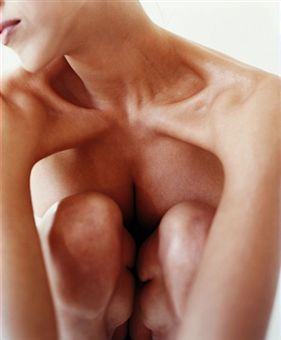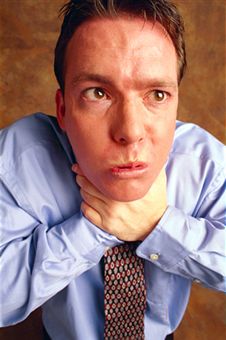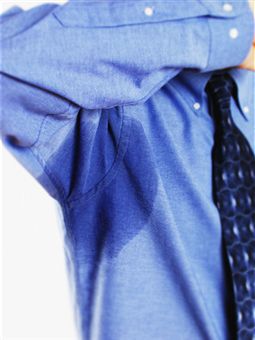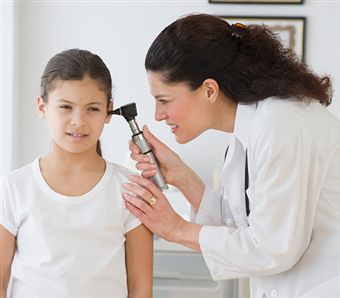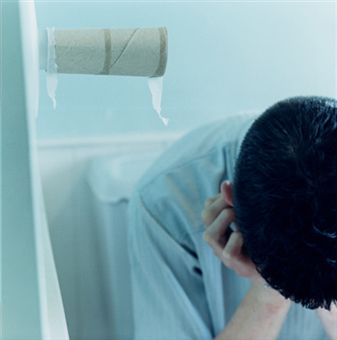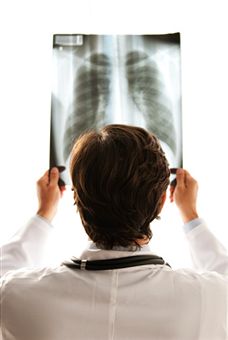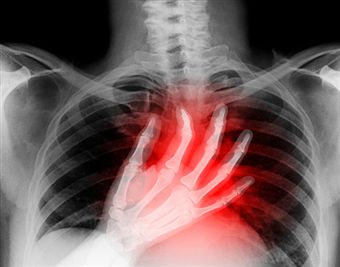Angina, also known as Angina Pectoris which means squeezing of the chest in Latin, is a symptom of ischemic heart disease. The chest discomfort, pressure and pain are caused by the coronary arteries delivering an inadequate amount of oxygen-rich blood to the heart. The two main causes of angina are artherosclerotic plaque buildup and coronary artery spasm. If left untreated, angina can result in total blockage of the arteries and cause a heart attack.
The risk of heart disease and heart attack increases with the number of risk factors you have and their severity. Some heart disease risk factors can develop within the first ten years of life. Risk factors include hypertension, coronary artery disease, high blood fats or cholesterol, family history of premature ischemic heart disease, smoking, high blood pressure, obesity and diabetes. Angina occurs more frequently in men than in women. The most frequent cause of angina is coronary artery disease. The risk factors you cannot control are family history, age and gender.
Four Different Types of Angina.
Stable Angina
Stable angina is chest pain or discomfort that usually occurs with stress or physical activity. It begins slowly and intensifies before going away but reoccurs with additional activity or stress. The pain usually lasts from one to 15 minutes and is relieved with medication or rest. The frequency and severity of the pain does not change much.
Symptoms of Stable Angina include pain that occurs behind or slightly to the left of the breastbone and a feeling of tightness, pressure, squeezing or crushing pain in the chest. Stable Angina can be treated with medication, angioplasty or stenting. Medications require no recovery time and are much less expensive than angioplasty and stenting.
People who take only medications to relieve their angina may not have quick chest pain relief, but if you choose to take medications to treat your angina, it’s important that you take them exactly as your doctor instructs you so that you get the maximum benefit from your medications.
Angioplasty and stenting may have earlier and better symptom relief, such as reduced chest pain but research has shown the chest pain relief was about the same between those who have angioplasty and stenting and those who only take medication after five years.
Unstable Angina
Unstable angina is chest pain that occurs suddenly and gets increasingly worse. It is the most serious form of angina and requires immediate medical attention. The chest pain lasts longer than 15 – 20 minutes, may occur along with a drop in blood pressure or significant shortness of breath, occurs without cause and responds poorly to nitroglycerin.
Calcium channel blockers are extremely effective in preventing the coronary spasms of variant angina. These drugs, along with nitrates, are the most common treatment. If you have unstable angina, you most likely will be admitted to the hospital and given medicines, including heparin, aspirin and other antiplatelet medicines.
Unstable angina requires close monitoring and testing. If you are at high risk for heart attack and chest pain continues after the above treatment, your doctor may decide to perform coronary catheterization and plan for possible angioplasty and stent placement to prevent a heart attack.
Variant Angina
Prinzmetal’s or variant angina is caused by spasm of one of the coronary arteries. It is usually the result of severe coronary atherosclerosis in at least one major vessel. The spasm normally occurs very close to the blockage. It mostly occurs spontaneously and unlike typical angina, it nearly always occurs when a person is at rest. It doesn’t occur with physical exertion or emotional stress.
Attacks can be very painful and usually occur between midnight and eight a.m. Treatment helps to control chest pain and prevent a heart attack. Nitroglycerin is frequently used to relieve an episode of pain. Nitrates, beta -blockers or calcium channel blockers may also be prescribed.
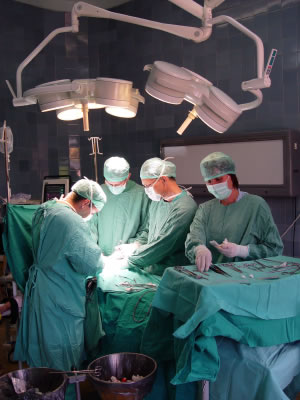
The medication dosage can be gradually reduced after six to 12 months of treatment. In some cases surgery is used when blockages exist along with spasm.
Microvascular Angina
Microvascular angina is caused by inadequate blood flow through the tiny cardiac blood vessels. Microvascular angina symptoms include chest pain or discomfort, a crushing or burning sensation in the chest, and pain or numbness in the arms, shoulders or jaw.
Microvascular angina usually occurs during routine daily activities and times of mental stress. It may be more severe or last longer than other types of angina pain. Symptoms include shortness of breath, sleep problems, fatigue, and lack of energy.
Treatment for microvascular angina includes nitroglycerin, calcium channel blockers or beta blockers and lifestyle changes. Since microvascular angina is not caused by significant arterial blockages, it is harder to recognize and diagnose.
Diagnosis
Laboratory tests can help the physician identify angina and conditions that may contribute to its development.
Urinalysis may reveal underlying conditions such as diabetes mellitus or renal disease, both of which are associated with atherosclerosis.
A chest x-ray may show an enlarged heart or other signs of possible heart failure.
Blood tests may show elevated CPK (creatine phosphokinase) level. When heart tissue dies it causes the enzyme CPK to be released into the blood. Blood tests to check for inflammation, high cholesterol and glucose levels are also used to diagnose angina. Stress tests are commonly used to evaluate coronary artery disease.
EKG
During a stress test an electrocardiogram (ECG or EKG) is taken before, during and after exercise on a treadmill or stationary bicycle. Patients who are at risk for a coronary event with exercise are given a drug to increase the heart rate instead of exercising on the treadmill. A normal ECG could indicate a patient’s chest pain is caused by something other than a blocked coronary artery.
A coronary angiogram consists of injecting contrast material into the bloodstream and taking x-rays of the coronary arteries. This enables the physician to see malformations, blockages, and stenosis in the vessels. In variant angina, spasm of an artery may be induced during angiography and would help confirm a diagnosis of that form of angina.
Echocardiography is a procedure used to evaluate the valves, function, and size of the heart. This diagnostic test uses soundwaves to take a detailed picture of the heart. A nuclear heart scan shows the level of blood flow to the heart by providing moving pictures of the blood flowing through the heart and arteries.
Medication Side Effects
All medications used to treat angina have similar side effects which should be reported to your physician immediately if they worsen or persist. They include headache, dizziness, flushing and restlessness. Blurred vision, dry mouth, nausea, pale skin or rapid heartbeat are serious side effects that should be reported immediately.
If the medication is working you will experience headaches which can be treated with aspirin or non aspirin pain relieve unless they become severe. Rash, itching, swelling, severe dizziness or trouble breathing are signs of an allergic reaction to the medication and require immediate attention.
Natural Herbs can help control angina symptoms. The following herbs are the most commonly used to relieve the symptoms of angina.
Garlic
Garlic contains substances that discourage platelets from sticking together and helps prevent blood clots. It also lowers total cholesterol and triglycerides while increasing HDL, the good cholesterol. Include one clove of garlic in your daily diet or take 10 milligrams per day.
Ginkgo
Ginkgo’s antioxidant properties neutralize harmful molecules called free radicals. It increases blood supply to the extremities and makes heart cells more efficient. It keeps platelets from sticking together and has a tonic effect on blood vessels. Take 40 to 80 milligrams of capsules three times per day.
Hawthorne
This traditional European herb used in treating heart disease dilates coronary arteries, which increases blood supply to the heart. Hawthorne improves oxygenation and energy metabolism and helps decrease lactic acid which is the waste product of exertion that causes heart muscle pain.
Hawthorne contains antioxidant and anti-inflammatory properties that help strengthen artery walls and reduce cholesterol. Take 100 to 250 milligrams three times per day or drink one cup of tea three times per day. The tea can be made by simmering one teaspoon of dried berries or steeping one teaspoon of leaves and flowers in a cup of hot water for ten to 15 minutes.
Coleus
Coleus keeps platelets from sticking together, relaxes arterial muscles, and improves heart function. Take 50 milligrams two or three time per day. Use coleus carefully if you take blood pressure medication or if your blood pressure is already low. Coleus may also increase the effects of antihistamine drugs.
Khella
This herb improves exercise tolerance and normalizes heart rhythms in patients with angina. It also help to dilate coronary arteries. Take 250 to 300 milligrams per day. Reduce the dosage if you experience nausea, dizziness or decreased appetite.
Ginger
This aromatic herb works best if eaten fresh and on an empty stomach. It lowers cholesterol and keeps platelets from sticking together. Take 250 milligrams per day. At higher doses, ginger may cause upset stomach.
Lifestyle changes can also help to relieve and control the symptoms of angina. If heavy meals trigger angina then avoid large meals and rich foods that leave you feeling stuffed. Try to avoid situations that make you upset or stressed if that is what triggers your angina. Eating a healthy diet is also important and can help to prevent or reduce high blood pressure and cholesterol. Quitting smoking along with avoiding alcoholic beverages will also help to control angina and reduce the frequency of symptoms.
Heart Attack
Angina does increase your risk of a heart attack. It’s very important that you know how and when to seek medical attention. An emergency action plan is important and will improve the chances of surviving cardiac arrest.
The plan should include making sure you as well as your family members know the location of the nearest hospital that offers 24-hour emergency heart care. Make sure you know the signs and symptoms of a heart attack, how to reach emergency medical services in your community and how to use aspirin and nitroglycerin when needed.
If your chest pain becomes severe, lasts longer than a few minutes, or is not relieved by rest or medicine seek immediate medical care. It can be difficult to tell the difference between unstable angina and a heart attack. Both are emergency situations, so you should call for an ambulance right away.
Prognosis
A diagnosis of angina at least gives you some warning that you have coronary artery disease. Undiagnosed angina can lead to a heart attack or sudden cardiac death. If you are at high risk for a heart attack, you need to find out early so that you can get the best treatment right away. Getting the appropriate treatment combined with lifestyle changes can result in living a normal, full and healthy life.

